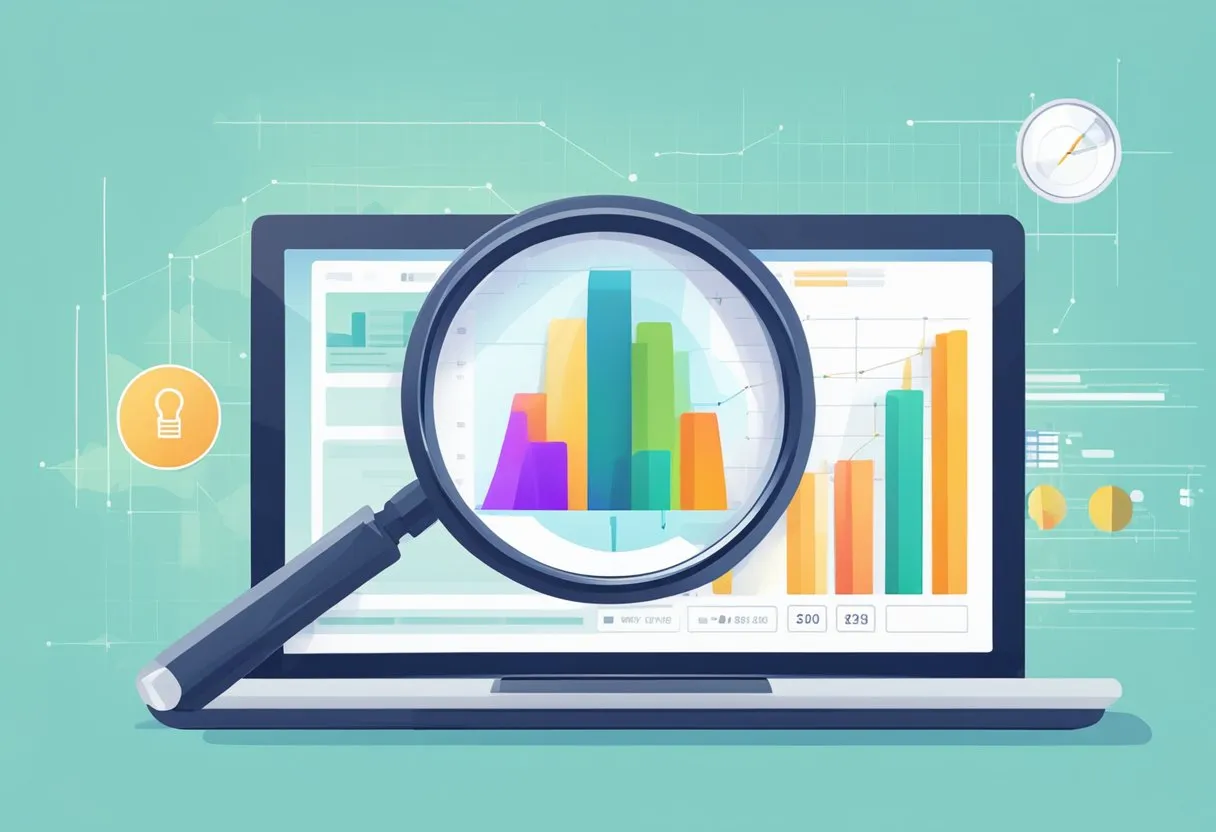Identifying Patterns of Click Fraud: Techniques and Strategies
In the ever-evolving landscape of digital marketing, businesses face the persistent threat of click fraud. This deceitful practice involves generating phony clicks on online ads, draining advertising budgets and skewing valuable data. Identifying patterns of click fraud is essential for companies to protect their investments and ensure the effectiveness of online advertising campaigns. By understanding how these fraudulent activities manifest, businesses can implement robust strategies to detect and prevent them.

Click fraud impacts the integrity of digital marketing by artificially inflating the number of clicks on a pay-per-click (PPC) or cost-per-click (CPC) advertisement. This action, often executed through automated programs or bots, can damage a company’s reputation and drain its financial resources. Organizations need to spot these patterns early to avoid unnecessary advertising costs and maintain accurate marketing analytics.
Patterns of click fraud can include unusual spikes in click-through rates or consistent clicks from a single IP address. Regular monitoring and advanced detection software play a crucial role in managing these threats. By leveraging tools that analyze click patterns and block suspicious activities, businesses can safeguard their digital marketing efforts against fraudulent attacks.
Key Takeaways
- Identifying click fraud patterns protects advertising budgets.
- Fraudulent clicks inflate metrics, distorting marketing data.
- Detection software is crucial to prevent financial losses.
Understanding Click Fraud
Click fraud is a significant issue in digital advertising where attackers manipulate clicks on online ads. This section explores the definition of click fraud, identifies its various types, and highlights common sources from which fraudulent clicks originate.
Definition of Click Fraud
Click fraud involves unauthorized clicks on online ads. It can be carried out by either humans or bots. These clicks are meant to deplete an advertiser’s budget without any intent of purchasing the product. Businesses may suffer financial losses because their ads don’t reach genuine customers.
Ad Fraud: This is a broader category that encompasses click fraud. It’s important to distinguish between these to formulate effective prevention strategies. Bot clicks and automated programs are often used to conduct click fraud.
Types of Click Fraud
There are various forms of click fraud. Manual click fraud involves individuals intentionally clicking on ads. This may happen due to malicious intent from competitors aiming to exhaust an advertiser’s budget.
Botnets and automated programs are commonly deployed to automate this process. Bot clicks are difficult to detect because they mimic human behavior. Click farms are another type, where a large group of low-paid workers manually click on ads to skew results.
Competitor clicks are when businesses click on rival ads to disrupt their campaigns. All these activities falsely inflate click numbers, affecting advertising analytics.
Common Sources of Fraudulent Clicks
Fraudulent clicks can emerge from several sources. Bots and automated scripts can produce a high volume of fake clicks quickly. These are often part of larger botnets operated remotely.
Click farms are establishments where individuals are paid to click on ads. This is a cost-effective method for fraudsters but can negatively affect ad campaign budgets. These farms are most common in regions with low wages.
Competitors might engage actively in click fraud to damage each other’s advertising efforts. It’s crucial for businesses to recognize and address these sources to protect their digital advertising investments.
Impact on Advertising

Click fraud affects online advertising in many ways. It leads to increased costs for businesses, inaccurate data for decision-making, and complex legal challenges. Understanding these impacts helps marketers allocate resources effectively and respond to fraudulent activities.
Effects on Advertising Budgets
Click fraud can drive up ad spending significantly. When bots generate false clicks, companies pay for interactions that don’t result in genuine consumer engagement. These extra costs reduce the total return on investment (ROI) of a campaign.
Businesses end up spending a large portion of their advertising budgets on fraudulent clicks, which can drain financial resources meant for legitimate ad impressions. Because of this, marketing budgets may need constant adjustments to account for the misleading data caused by click fraud.
Damage to Campaign Data Accuracy
Click fraud can severely impact the accuracy of ad campaign data. False clicks distort ad traffic reports and metrics, making it difficult to assess the true effectiveness of advertising strategies. This damage results in poor ad targeting and decision-making.
Accurate data is crucial for optimizing ad campaigns and maximizing ROI. When fraudulent clicks inflate engagement metrics, it becomes challenging to determine which ad scheduling and pay-per-click advertising techniques are truly effective. This situation can lead to misguided strategies and wasted resources.
Legal and Ethical Considerations
The rise of click fraud also brings about legal and ethical concerns. Companies may face challenges in pursuing legal action against fraudsters due to the complexity of digital transactions and the global nature of online advertising.
The ethical implications of click fraud can lead to distrust among consumers and advertisers. Promoting a fair and transparent digital marketplace involves addressing these unethical practices. Legal frameworks need to be strengthened to protect businesses and maintain integrity in online advertising.
Detection and Analysis

Detecting patterns of click fraud involves recognizing irregularities in data metrics such as click-through rates, bounce rates, and conversion rates. Tools like Google Analytics can help reveal suspicious activities and click patterns. Advanced detection tools use techniques like machine learning to provide real-time insights and improve overall detection capabilities.
Monitoring and Recognizing Patterns
Identifying click fraud often begins with monitoring various digital metrics. Key metrics include click-through rates (CTR), bounce rates, and conversion rates. Unexpected spikes in CTR or sudden drops in conversion rates can be red flags. Recognizing these patterns is crucial.
Another aspect is traffic quality analysis. Changes in user behavior, such as shorter session durations or uncharacteristic navigation patterns, may suggest misconduct.
Geo-targeting also plays a role. Traffic from unexpected or irrelevant locations could point to fraudulent clicks, making location-based tracking a vital part of detection.
Advanced Detection Tools and Techniques
The use of click fraud detection tools is essential in detailed analysis. These tools monitor real-time click data and use IP analysis to block bad actors. They can execute click audits, which review historical click patterns to find anomalies.
Modern tools employ machine learning algorithms. These algorithms learn from historical data to recognize abnormal patterns and predict potential fraud.
Integrating these tools with comprehensive platforms, like Google Analytics, aids in providing a holistic view of traffic quality and click efficacy, detecting issues before they impact ad performance.
Role of Analytics in Fraud Prevention
Analytics tools, such as Google Analytics, are pivotal in preventing click fraud. They offer detailed insights into user behavior, allowing for real-time and retrospective data analysis. Through user behavior analysis, irregularities in click patterns can be identified swiftly.
Advanced analytics platforms also allow for the setting of alerts for specific metrics like CTR, ensuring immediate attention when thresholds are breached. This proactive approach helps in maintaining ad budget efficiency.
Incorporating data visualization in analytics aids in understanding complex data, making anomaly detection more intuitive and actionable without needing complex interpretations.
Strategies to Prevent and Mitigate Risks
Preventing click fraud is essential for maintaining the integrity of online advertising campaigns. Key strategies include implementing best practices, using anti-fraud software, and developing a robust response plan when fraud is detected.
Best Practices for Click Fraud Prevention
Organizations should adopt several best practices to minimize the risk of click fraud. These include monitoring campaign performance metrics closely to identify unusual patterns in PPC ads. Regularly analyzing IP address logs can help pinpoint sources of fraudulent traffic, such as bots or suspicious IP ranges.
Another effective strategy is to limit ad exposure by setting geographic restrictions and excluding IP addresses known to engage in ad stacking. Businesses may also consider setting tighter targeting criteria in Google Ads to prevent ads from showing up in low-quality environments. Implementing these practices helps in detecting and responding to fraud more swiftly.
Utilizing Anti-Fraud Software and Services
Specialized software plays a crucial role in defending against click fraud. Tools like Noipfraud and N2 are designed to filter out invalid clicks by analyzing user behavior and blocking bot traffic. These services often provide real-time data to help advertisers adjust their campaigns quickly.
Fraud prevention software offers insights into campaign performance, enabling businesses to make informed decisions. Integrating such tools with advertising campaigns enhances their effectiveness by continuously monitoring for fraudulent activities. Businesses can also leverage third-party services to gain additional layers of protection and improve their defense mechanisms against click fraud.
Developing a Response Plan for Detected Fraud
Having a response plan in place is vital for mitigating the risks associated with detected fraud. Immediate actions might include stopping campaigns temporarily to prevent further losses and conducting a detailed analysis of fraudulent activity. This helps in identifying patterns and assessing the impact on online advertising campaigns.
Organizations should establish clear procedures to address fraud incidents, including reporting metrics and documenting legal consequences for perpetrators. By training staff and defining roles in fraud prevention, companies can respond swiftly and efficiently to protect their interests. Regular updates and reviews of the response plan ensure that it remains effective and adaptive to new types of click fraud threats.
Future of Click Fraud Prevention
The future of click fraud prevention involves using advanced technology to combat increasingly sophisticated threats. Understanding the emerging trends in AI and machine learning, the evolving security landscape in digital advertising, and the significance of industry collaboration is crucial.
Emerging Trends in AI and Machine Learning
AI and machine learning are at the forefront of fighting click fraud. These technologies analyze large datasets in real time to identify fraud patterns, such as unusual spikes in clicks or traffic from known botnets. With AI, digital ad networks can detect automated click fraud and strange geographic locations swiftly.
Machine learning models improve over time, constantly updating as they gather more marketing data. They help distinguish between real user engagement and fraudulent activities, minimizing the impact of attacks on ad campaigns. This innovation is essential as cybercriminals develop more complex methods.
Evolving Landscape of Digital Advertising Security
Digital advertising security is changing to address new threats. Ad networks are focusing on building stronger defenses to protect their clients from click fraud attacks. Automated systems can now prevent fraud before it affects campaigns, using pre-click prevention strategies.
Security measures include monitoring IP addresses associated with cybercriminals and improving transparency between networks. Efforts to secure user data and transaction information are also growing, making it harder for fraudsters to exploit vulnerabilities in online ad systems.
Industry Collaboration and Standardization
Industry collaboration plays a vital role in combating click fraud. By working together, companies can establish universal standards and share timely information about threats. This helps create a unified defense against fraud.
Developing shared guidelines encourages ad networks to adopt best practices, reducing inconsistencies in the market. Creating standardized responses and preventive measures strengthens overall security. Ongoing collaboration among stakeholders leads to a more resilient and secure digital advertising environment, protecting against future fraud challenges.